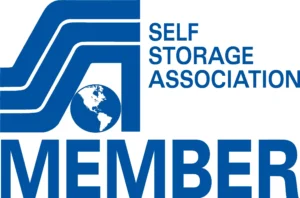Office downsizing is an essential strategy for businesses looking to streamline operations and reduce costs. By efficiently utilizing space, companies can create a more productive and organized work environment. Downsizing involves decluttering, renovation, and rethinking how office space is used. Decluttering your office by eliminating unnecessary items and utilizing self-storage solutions can free up valuable space and enhance productivity. Renovation can play a key role in transforming a smaller office into a modern, efficient workspace.
Additionally, downsizing can lead to significant cost savings on rent, utilities, and maintenance. However, the process comes with challenges, such as managing employee morale and ensuring smooth transitions. Utilizing self-storage and car storage options can help store excess items during the downsizing process. This ultimate guide will explore the benefits and challenges of office downsizing and provide actionable steps to create a more efficient and cost-effective workspace.
Embrace the downsizing journey to optimize your office environment and boost overall business performance.
Office Downsizing – 4 Reasons Why You Should Do It
Before deciding whether to give up the lease on your multistorey office building, you must understand why you are doing it. Find out if and why downsizing is the right option for you. This will help you figure out how to downsize effectively. There can be many reasons to downsize your office space:
1. To Cut Costs
Cost saving is the biggest advantage of downsizing the office space. A big office space, spread across several thousand square feet and occupying two to three floors of a building, is an expensive set-up. Commercial rent, maintenance fees and electricity charges are quite steep. Add to that office furniture, stationery, computers, printers, air conditioners, a well-stocked pantry and decor, and your expenses will only get higher. You can half the expense by actioning the hybrid office model.
2. To Ensure Safety
Downsizing your office does not mean letting go of employees. It could just be opting for smaller office space and working out a schedule that allows only a few employees to come in every day. Companies must follow COVID-19 protocol. Crowded, closed spaces are still considered hotspots for infection transmission. When you have fewer people at work, it is easier to implement safe and hygienic practices.
3. To Engage Employees
Maintaining a proper balance between work life and one’s personal life is particularly important. For many people, the option to work from home helps them stay in touch with their family, achieve personal goals, and have an active social life while achieving performance goals at work as well. These employees are more effective at their job when they have a flexible office schedule. A study revealed that 80% of employees believe that a flexible work plan would help them take better care of their mental health, 66% wanted a full-time work-from-home option and 33% wanted their employers to implement a hybrid office model. (https://workitspaces.com.au/blog/downsize-your-office/)
4. To Focus Spending on Necessities
Cutting costs does not mean you pocket the surplus. It gives you an opportunity to invest in matters that can improve your business and the lives of your employees. This could mean purchasing better software to enable a smooth work-from-home setup or partnering with suppliers of good repute or venturing into fresh territory for your sales and expanding your vistas.
Any change that you make should have a positive impact on you and on those around you. This applies to work as well. As an employer, keeping your employees happy is just as important as maintaining your clientele. A happy employee works harder and remains loyal to the organization no matter what. When you decide to downsize your office space, you must assess the impact on your employees. Have your Human Resource team communicate with your employees about the proposed changes. Find out what they feel and listen to their suggestions. Getting them involved in the process will make them feel valued and promote loyalty.
6 Step Guide on Downsizing your Office While Maintaining Productivity
Once you have decided to downsize, you need to plan out the process. It is not going to happen overnight and requires months of planning.
Step 1: Declutter to Downsize
You need to know what you are going to use and how many people need to come to work every day. If you have a large office that is fully equipped with furniture, office supplies, computers, printers, copy machines, etc., then your first task is to bring down the numbers to a bare minimum. Do not be hasty and give away or sell the extra furniture and supplies. Instead, rent out a storage space and store your office goods there. A self-storage unit allows you to declutter your office space without getting rid of equipment that you invested in.
Keeping them in storage means you can retrieve some or all of them later. Self Storage India gives you the option of renting out a space that suits your needs. Our storage expert will help calculate how much storage space you require and provide you with a unit at our facility that is perfect for you.
Another way to declutter is by going paperless. When you use paper, you might end up using too much of it and that calls for more cabinets and desk space, proving counterproductive. Of course, you will still need to keep some printed documents around, but you can easily reduce the amount of paper you have lying around. Using paperless office software enables businesses to save money by reducing printing costs, eliminating photocopying expenses, and decreasing paper storage requirements. They also reduce clutter and help employees focus on work.
Tips to go paperless:
- Discover and use online forms tools that allow you to upload multiple fields, edit them, and send them directly to your recipients.
- Invest in paperless office software like a Document Management System, that allows employees to access documents electronically and eliminates the need for physical files.
Step 2: Understand What Works for You
Moving to a hybrid office model requires proper understanding and evaluation of the tasks and goals of various employees and their teams. A hybrid model combines the traditional office setup with a virtual one. Employees come into the office either by choice or only if their physical presence is absolutely required or just to build healthy work relations between employees. While the virtual office gives one the utmost flexibility, nothing quite replaces real interactions. This makes periodic office visits a great team-bonding exercise. Discuss with heads of the various teams and create a timetable that specifies when each team should come to the office.
Step 3: Choose the Right Space
Once you have decided to downsize and worked out how many people will be in the office daily, you now need to find a suitable office space. If your current office premise is too big for your new plan, then look for a smaller space. There are several types of spaces to choose from:
- A dedicated office space that is smaller than the previous set-up.
- A reserved temporary shared workplace that is rented on an as-needed basis.
- A temporary shared space whose location varies depending on the preference of those meeting.
Step 4: Choose an Ergonomic Design
If you have a fixed number of employees coming in every day, then you could rent out a space that will accommodate them all. Here are some tips to keep your downsized office space productive:
- Ensure that it is spacious enough and does not make your employees feel cramped and claustrophobic.
- Maintain an open floor plan, which helps promotes better collaboration between employees.
- Create a separate meeting room for conferences.
- Install one or two cubicles for privacy during client calls.
- Put away as many filing cabinets as possible in storage. Keep as much data as possible in cloud storage.
- Decide seating arrangement based on the frequency of interaction between two departments or two individuals.
- Convert common areas into collaboration spaces for members of different departments to bond, ideate and brainstorm. Furnish it with comfortable chairs, ample lighting, and cheerful decor to create a casual ambience.
In the case of small organisations and start-ups, there may not even be a need for a dedicated office. Teams can meet at shared office spaces that are leased out on an hourly basis. These shared spaces come in diverse sizes depending on the number of people congregating. You can take up a conference hall for a team meeting or a private office for a more personal one-on-one interaction. Most shared workspace facilities come with a coffee shop attached, which means after an intensive work session, the team can unwind together, bonding like they would in a traditional office environment.
Step 5: Pick out Furniture and Decor
In a downsized office space, minimalism is the way to go. Do not clutter every nook and corner with furniture and decor. Even if you are continuing at the current space, you do not have to keep all your furniture and equipment. Move most of it into a storage space and retain only what you need. Plus, renting a storage space gives you the opportunity to see what else you could do with your extra space.
Here are some ideas for furnishing your office:
- Use Ergonomic Office Chairs:
A lot of companies provide chairs that are far too big for most people. Instead, look at purchasing smaller ones that still offer ample support and comfort. To ensure everyone feels at ease, opt for a chair design that allows for easy movement and flexibility, like adjustable armrests and swivel bases.
- Avoid Bulky Tables:
Going paperless means that all documentation is digital. This keeps the desk surface clutter free and does not call for many storage drawers. You could pick large tables to seat an entire team or smaller ones that are shared by two members seated facing each other.
- Limit Number of Storage Cabinets:
Limit the number of cabinets in your office. Encourage your employees to make scanned copies of all important documents.
- Incorporate Uplifting Decor:
Investing in high-quality lamps can help brighten up dark corners and give the whole room a more professional appearance. Keep decor at a bare minimum. Potted plants give the office atmosphere a fresh feel. Place air-purifying indoor plants around the office. Quirky inspirational posters will put a fun spin on things. Brightly painted well-lit walls, are all the decor you need.
Step 6: Embrace the Hybrid Office Model
The hybrid office of today includes the traditional work-from-office mode in combination with the work-from-home mode. Some employees will prefer to come to work, while others will be happy to stay home. Upon consultation with team heads and employees, you need to produce a schedule that enables the implementation of the hybrid office plan. Two interesting modes of operation to consider are:
1. A Rotating Weekly Schedule:
According to this plan every day a different set of employees come into the office. If the organization has multiple departments, each team could meet on a specific day. This way the team gets to interact with each other in person at least once a week. Revisit and revise this schedule periodically.
2. A Hot Desk System:
In this model employees who come to work do not have a fixed desk to work at. They come in and choose a spot. Given that the same employees will not be coming in to work every day, the Hot Desk method encourages them to meet and interact with different members of the office whenever they come. This could lead to creative collaborations.
Watchouts when Downsizing your Office
There are many benefits to downsizing your office space. Be it cost saving or employee satisfaction, if there is no dip in productivity and profits, downsizing and opting for more flexible work patterns, is the right way to go. Nevertheless, there are some disadvantages that need to be addressed and sorted out at the very outset to ensure progress in all spheres of your company.
Misinformation on Company Policy:
The word downsizing has come to have a negative connotation. Employees may assume that they may lose their jobs as a part of the downsizing process. Communicate your intentions clearly with your employees. Make sure that they understand what your goal is in downsizing and assure them that their jobs are secure.
Inaccurate Reporting of Goal Realisation:
As you and your employees settle into the new work model, it will be difficult to keep track of the progress of the various teams if you do not have a proper grip on things. Use digital tools that help track progress and meet on a regular basis to discuss the same. Submitting daily reports on the status of allotted tasks is one way to ensure nobody is slackening.
Lack of Interaction between Colleagues:
Working from home is not necessarily ideal because we miss the interaction with colleagues. However, online collaboration tools help us connect with co-workers effectively by allowing us to bounce ideas off each other via chat rooms, video conferencing, and shared whiteboards. These tools allow us to interact virtually in real-time, eliminating the need for travel expenses.
Reduced Sense of Belonging:
In the traditional workspace, the interpersonal bond is stronger, sheerly because everyone worked near each other. This created a sense of belonging and community. Working from home, reduces this bond, making it easier for employees to jump from one company to the next. To retain your employees despite this distance, encourage the teams to meet online more than once a day to discuss and brainstorm. You could also arrange physical team bonding lunches to bring everyone together.
Final Words on Office Downsizing
By following the strategies outlined in this ultimate guide, you can successfully navigate the transition while minimizing disruptions and maximizing benefits. From evaluating your current space needs to implementing smart storage solutions and fostering a flexible work culture, each step is designed to streamline operations and enhance employee satisfaction.
Remember, office downsizing is not just about reducing space but also about optimizing resources and creating an environment that supports your team’s best work. Embrace the opportunity to declutter, reorganize, and innovate, turning your downsized office into a dynamic and agile hub. With careful planning and a positive mindset, you can transform this challenge into a significant advantage, paving the way for a more sustainable and thriving business future.
Your journey to a smarter, more efficient office starts now!
FAQs for Office Downsizing
A: Office downsizing involves reducing the size of your office space, usually to cut costs, improve efficiency, or adapt to changes in the workforce.
A: Downsizing can save money on rent and utilities, and it can create a more efficient workspace if the company has fewer employees or more remote workers.
A: Communicate openly and honestly about the reasons for downsizing and involve employees in planning to ensure they feel supported and informed.
A: Key steps include assessing current space needs, decluttering and organizing, finding a smaller office, and planning the move carefully.
A: Evaluate which items are essential for daily operations and consider selling, donating, or recycling items that are no longer needed.
A: Excess furniture and equipment can be sold, donated to charities, or stored in a self-storage unit until you decide their fate.
A: Plan the downsizing in stages, if possible, to minimize disruption and keep communication channels open to address any issues promptly.
A: Technology can help streamline operations, enable remote work, and reduce the need for physical storage, making downsizing more manageable.
A: Use multifunctional furniture, implement flexible workspaces, and maximize natural light to create an efficient and comfortable environment.
A: Long-term benefits include reduced overhead costs, a more agile and adaptable business model, and the potential to invest savings in other areas of growth.







